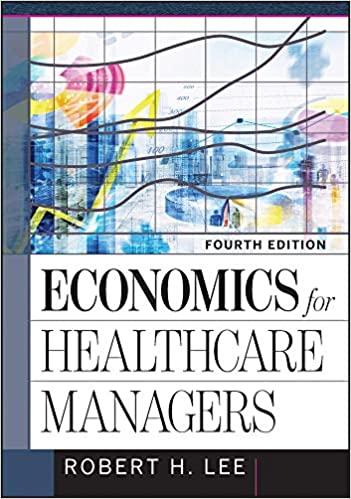More than two-thirds of the millions of children without health insurance appear to be eligible for Medicaid
Question:
More than two-thirds of the millions of children without health insurance appear to be eligible for Medicaid or the Children’s Health Insurance Program (Kenney et al. 2015). For many of these children, health insurance would be free. Not accepting free health insurance makes sense in standard economics only if you believe that the hassles of signing up for these programs outweigh their considerable benefits, but behavioral economics notes several reasons for this pattern. First, parents may focus on the up-front hassles and give much less emphasis to the future benefits. That is, the parents may heavily discount the future benefits. Second, the wellknown problem of procrastination means that tomorrow or next week is always a better time than today to go to the trouble of enrolling a child. Third, we know that many decision makers have trouble with probabilities, meaning that the parents of these uninsured children make poor assessments of the chance that their child will become seriously ill or that better access to medical care will be important.
Between 1984 and 2009, a series of reforms sought to streamline and simplify enrollment in Medicaid and the Children’s Health Insurance Program. These reforms allowed states to permit continuous enrollment, to eliminate face-to-face interviews, to simplify verification procedures, to grant temporary eligibility, and to use eligibility for other programs (e.g., the Supplemental Nutrition Assistance Program) to determine eligibility.
Advances in information technology made these reforms possible, and the Affordable Care Act financially supported upgrades to outdated Medicaid eligibility systems, which are integrated with or connected to health insurance marketplaces in every state. As of January 2017, 39 states could make Medicaid eligibility determinations within 24 hours, and in 28 states, applicants could apply using mobile devices (Brooks et al. 2017). Not surprisingly, the increased convenience of these new systems has boosted enrollment in Medicaid and the Children’s Health Insurance Program. For example, Alabama removed asset tests for children, stopped requirements for an in-person interview, made eligibility last for a full year, and simplified the application process in other ways. As a result, the share of eligible children with coverage rose from 91 percent in 2008 to 95 percent in 2015 (Georgetown University Center for Children 2017). Much of this growth occurred after implementation of the Affordable Care Act, but not because many children got coverage via marketplace plans. Less than 1 percent of the eligible children got their coverage this way.
Alabama’s enhancements incorporate ideas from behavioral economics. They make enrollment easier, rather than emphasizing traditional outreach strategies or price reductions. Unfortunately, many children who are eligible for health insurance subsidies remain uninsured. Rice (2013) suggests that parents’ failure to understand the risks that their children face, excessive discounting of the future, or limited grasp of how insurance works might explain this. An experiment (Flores et al. 2016) suggests that knowledge may be a major issue. The experiment funded parent mentors (experienced parents with a child covered by Medicaid or the Children’s Health Insurance Program), who received two days of training and then helped families apply for insurance, find providers, and access social services. The result was that more children got coverage, access to medical and dental care improved, out-of-pocket costs fell, parental satisfaction increased, and quality of care improved.
Discussion Questions
• Why are children who are eligible for free coverage uninsured?
• What behavioral economics approaches would further increase coverage?
• Why are adults who are eligible for low-cost coverage uninsured?
• What behavioral economics approaches would further increase coverage?
• How does status quo bias affect health insurance decisions?
• How does loss aversion affect health insurance decisions?
• How does decision overload affect health insurance decisions?
• How might insurance decisions be reframed to increase enrollment?
• How could enrollment in health insurance for children be further simplified?
• How could health insurance be simplified overall?
Step by Step Answer:






